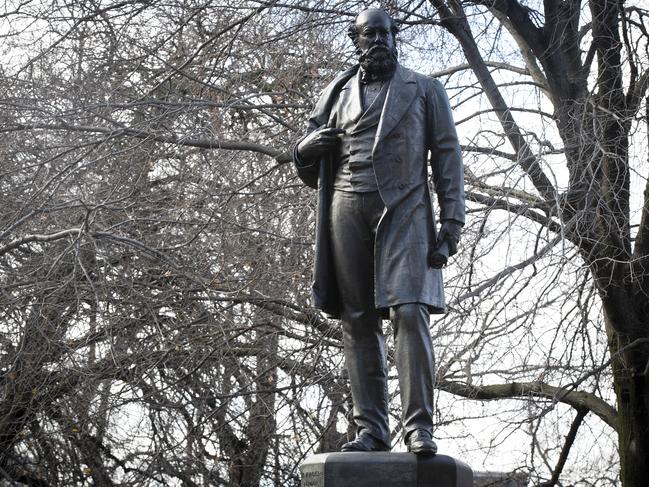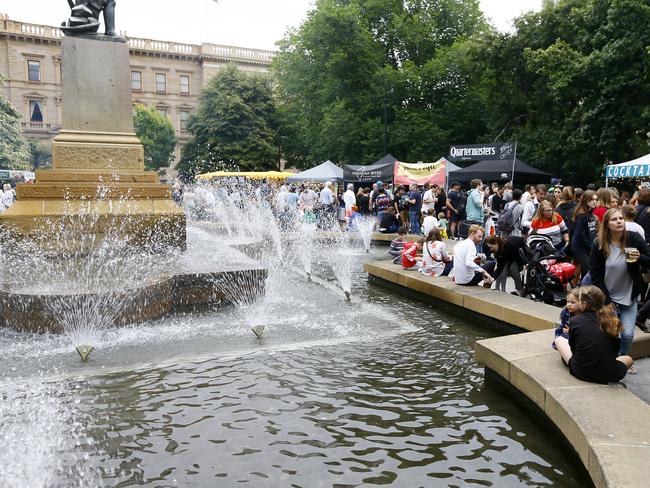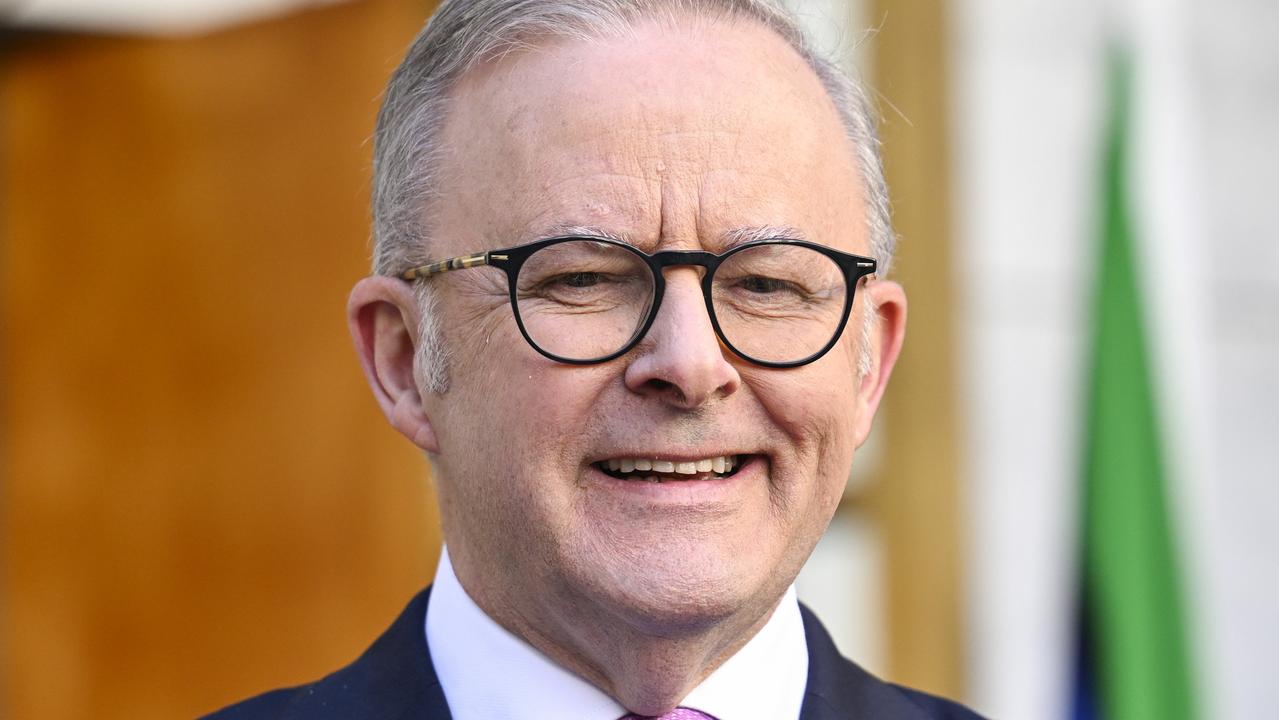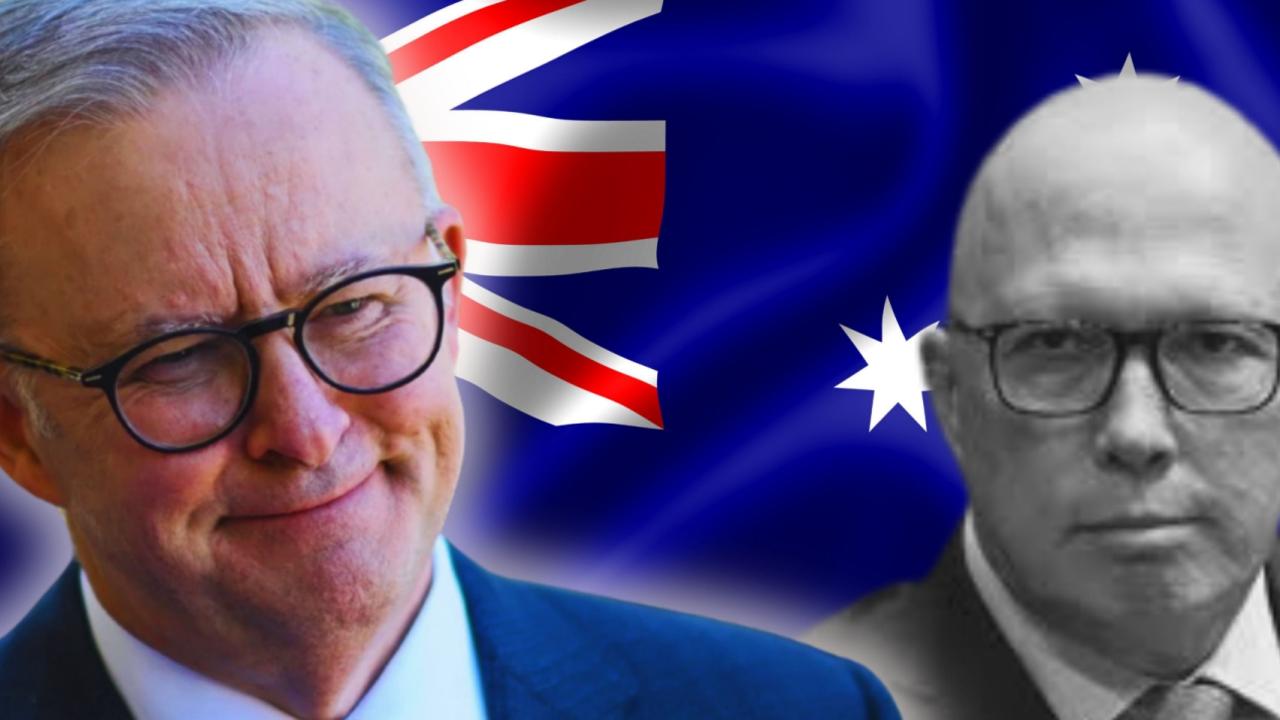Talking Point: It is hoped the art will provoke conversation and reflection
Artists will be invited to create works that respond to the statue of William Crowther and spark conversations, says Anna Reynolds

Opinion
Don't miss out on the headlines from Opinion. Followed categories will be added to My News.
SINCE its refurbishment in 2016, Franklin Square has become a great spot for many Hobart residents to relax. Walk through the square on a weekday lunchtime and you’ll likely see young kids playing with the giant chess set, while nearby benches are filled by office workers enjoying a coffee. Stop by on a Friday evening in summer, and the square will be buzzing with people enjoying the food vans at Street Eats Franko.
Unfortunately, for other members of our community Franklin Square is not a place of joy. Instead, it is a source of great pain.
A statue in Franklin Square of 19th century surgeon William Crowther has long been an issue of community concern, and for Tasmanian Aboriginal people the statue continues to be a distressing reminder of a particularly confronting chapter in our state’s history.
Dutch-born Crowther, who served for a short time as Tasmanian premier, is known for mutilating the remains of Aboriginal man William Lanne in the 1860s. Lanne was well regarded as an advocate for his community and became known as King Billy — giving his name to the native pine we all know and love.
After Lanne’s death in 1869, Crowther removed Lanne’s skull and sent it to the Royal College of Surgeons in London, where it remained for more than 120 years. It was only after a long battle by members of Tasmania’s Aboriginal communities that Lanne’s skull was returned from the UK in 1991 and given a proper burial.
Even at the time, Crowther’s treatment of Lanne’s skeleton was considered shocking, and resulted in his suspension from his position as honorary medical officer at Hobart General Hospital. An important part of the story is that Crowther was not the only well-known Hobartian doctor involved in removing body parts. But as it stands, the Crowther statue makes no mention of this controversy.
A new arts initiative from Hobart City Council aims to address this significant gap in public understanding. We are inviting artists to submit proposals for temporary artworks that respond to the Crowther statue.

Four artworks will be chosen, including at least two by Aboriginal artists, and will be placed in Franklin Square for up to two months over the next year.
The proposed artworks can address any aspect of the relevant historical context: William Crowther’s actions, William Lanne’s status as an Aboriginal leader, the politics of 1860s Hobart, current views on how Lanne’s body was treated by a range of people, or the role of bronze statues more broadly.
It is hoped that each of the four artworks will provoke conversation, engagement and reflection in the community, and those responses will help inform discussion about the possibility of a permanent response to the statue in future.
Providing more complete and updated information about our important stories is part of the historic process. New interpretations of people and events, based on new information and changing attitudes is particularly important for this Hobart story.
Hobart is certainly not unique in having to grapple with difficult events in its past, and there are numerous precedents for this kind of project.
In the US, southern cities including Atlanta have installed new information to contextualise Confederate monuments.
In the UK, Edinburgh City Council recently approved an updated plaque for a statue of Henry Dundas, acknowledging his role in the slave trade.
In the Italian town of Bolzano a bas-relief of Benito Mussolini has been updated to include a quote from Jewish German philosopher Hannah Arendt. The phrase “Nobody has the right to obey” is superimposed across the frieze – the result of an open public bid inviting artist proposals, very similar to our own council initiative.
In Australia, there have also been changes made to public monuments. In 1994, United Nations Year of Indigenous Peoples, a counter-memorial was set in the base of the Fremantle Explorers Monument in Western Australia, outlining the history of provocation that led to the explorers’ deaths.
Actions such as these do not erase history; instead they add to our understanding, encourage new interpretations, and invite us to consider alternative viewpoints.
By inviting Tasmanian artists to submit their proposals for works that respond to the Crowther statue in Franklin Square, we hope to initiate a dialogue that is distinctive, constructive and relates directly to our city’s unique history.
And by sharing a more complete history of William Crowther — not denying the positive contributions he made to society, but acknowledging the hurt and pain caused by his actions towards William “King Billy” Lanne — the City of Hobart can honour the commitment to truth telling that was made in the Aboriginal Commitment and Action Plan earlier this year.
I can think of no better way to tackle this sensitive and challenging subject than through the creativity, innovation and insight of Tasmanian artists.
I look forward to seeing the proposals that are submitted for consideration, and will welcome the opportunity to participate in the resulting conversations.
Councillor Anna Reynolds is Lord Mayor of Hobart.


